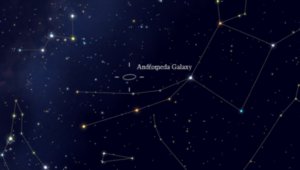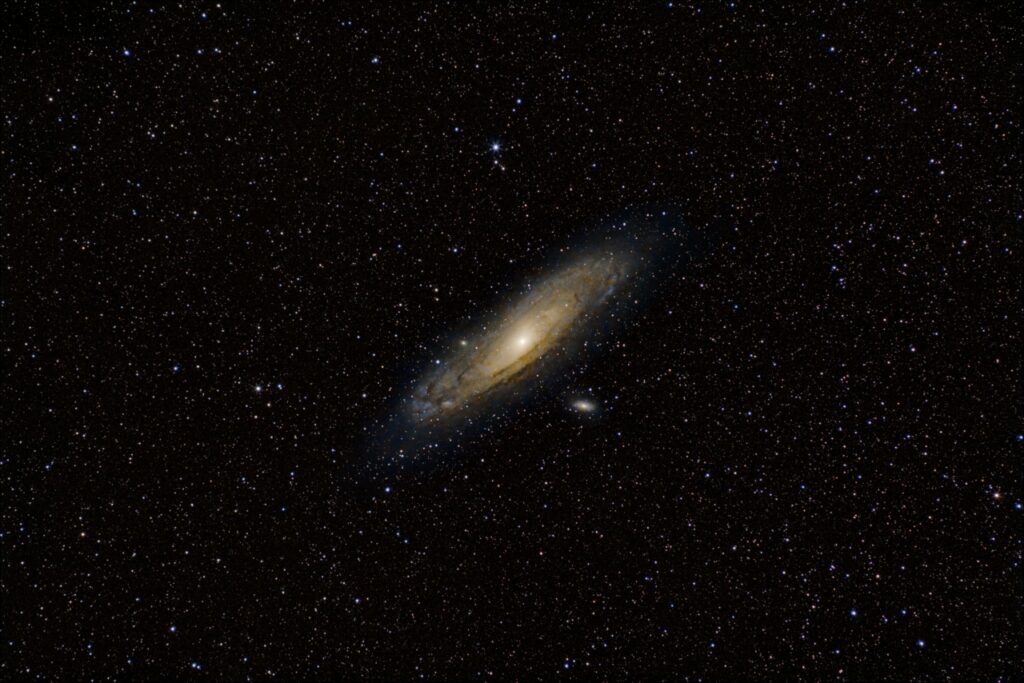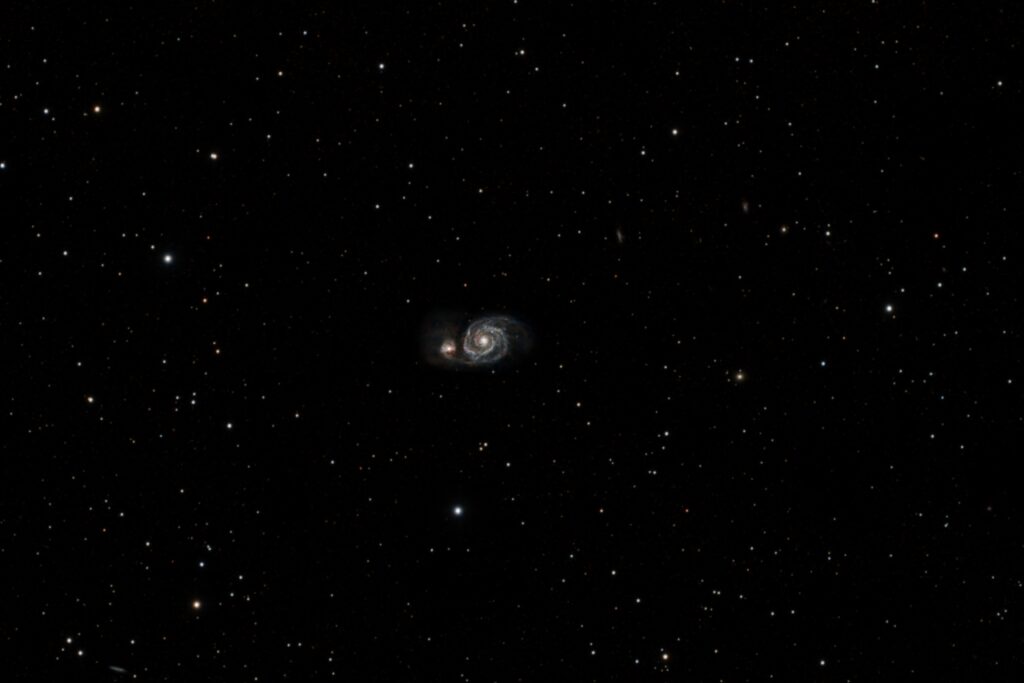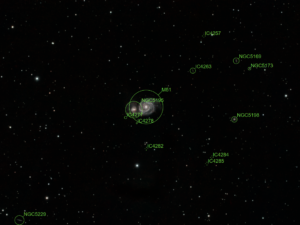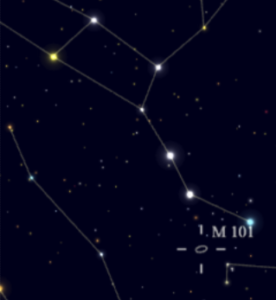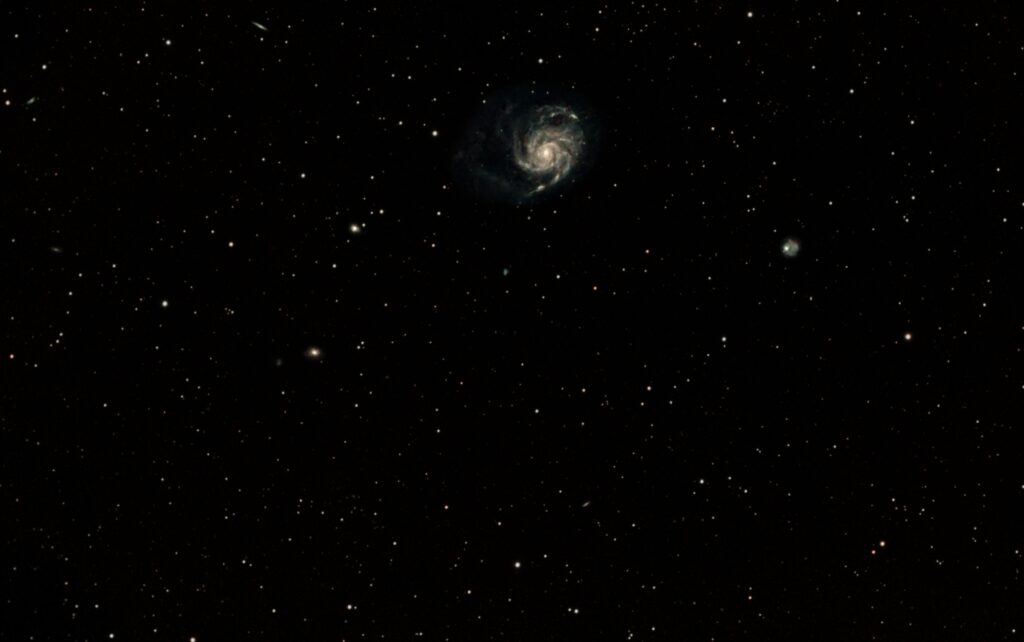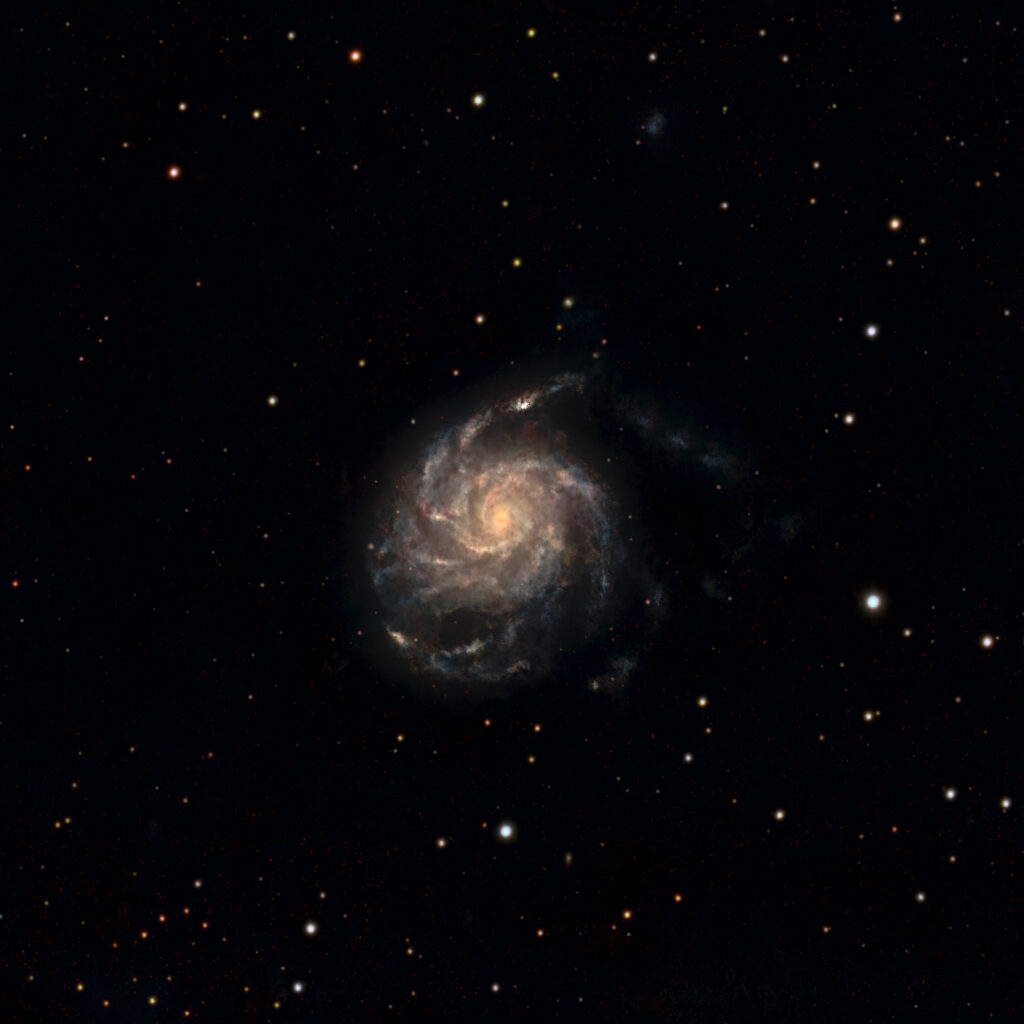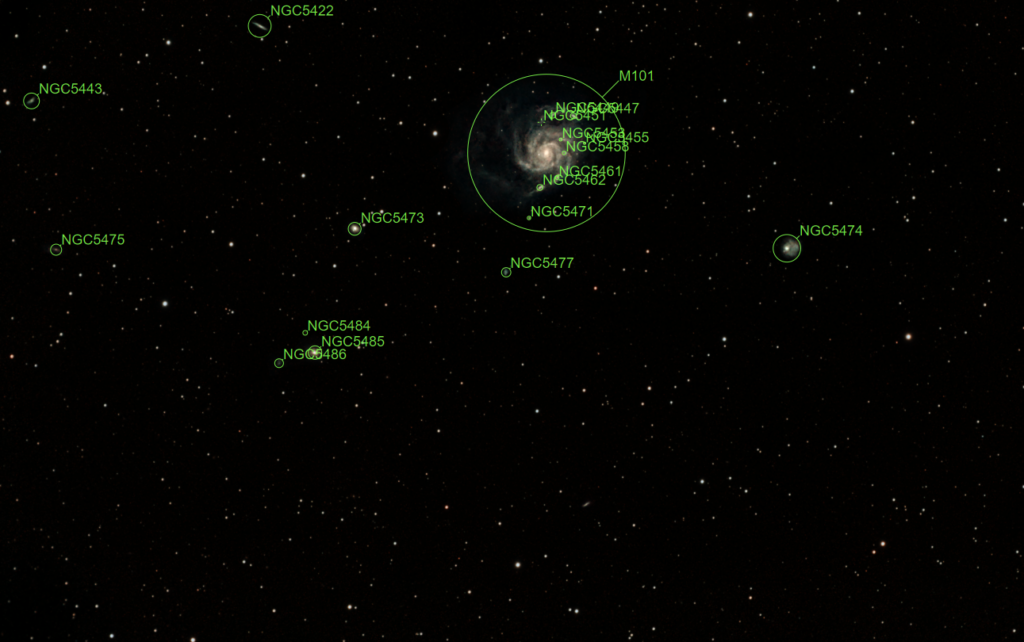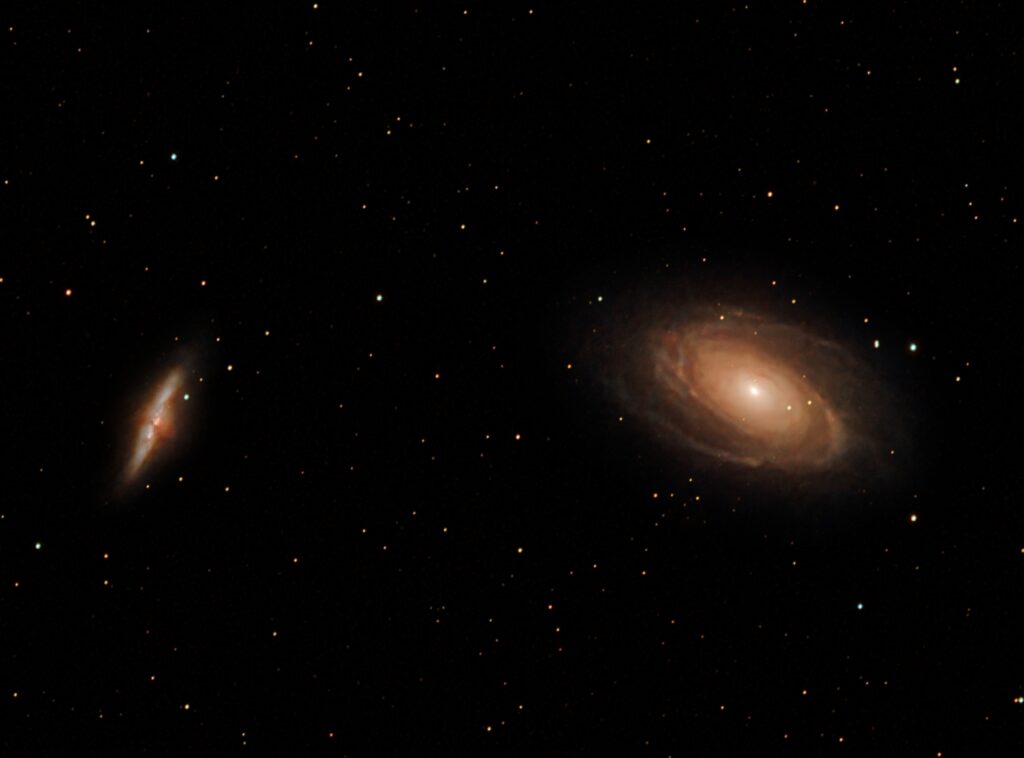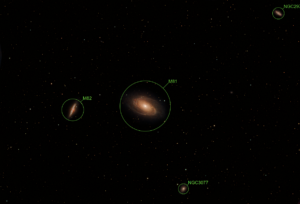Islands in the Sky: Galaxies in the Cosmos
For much of human history, the vast collections of stars we now call galaxies were misunderstood. Before the 20th century, astronomers believed that the Milky Way encompassed the entire universe, and mysterious, faint patches of light observed in the night sky—known as nebulae—were thought to be clouds of gas or clusters within our own galaxy.
A pivotal shift in our understanding came in the 1920s, when astronomer Edwin Hubble used the 100-inch Hooker Telescope at Mount Wilson Observatory to study the Andromeda Nebula (now known as the Andromeda Galaxy, M31). By identifying Cepheid variable stars within Andromeda, Hubble calculated its distance and proved that it lay far beyond the Milky Way. This discovery shattered the notion of a single-galaxy universe and revealed that the cosmos is filled with countless “islands in the sky”—vast, independent galaxies spanning the observable universe.
Galaxies come in many forms, including spirals, ellipticals, and irregular shapes, each playing a role in the grand cosmic tapestry. They contain billions to trillions of stars, along with vast amounts of gas, dust, and dark matter, and are bound together by gravity. Over time, galaxies interact, collide, and evolve, shaping the structure of the universe itself.
Today, astronomers continue to uncover the secrets of galaxies using powerful telescopes such as the Hubble Space Telescope and the James Webb Space Telescope (JWST), probing deeper into the cosmos and into the very origins of the first galaxies that formed after the Big Bang. These celestial islands remind us that our universe is far grander and more intricate than early astronomers ever imagined.
Messier 31, The Great Andromeda Galaxy
click on any image to showcase

M31, the Great Andromeda Galaxy, is the largest and most massive galaxy in the Local Group, a collection of more than 50 galaxies that includes the Milky Way, the Triangulum Galaxy (M33), and numerous dwarf galaxies. The Local Group spans about 10 million light-years and is gravitationally bound, with its members interacting over cosmic timescales.
Andromeda is a spiral galaxy located approximately 2.5 million light-years from Earth. It is the closest major galaxy to the Milky Way and is on a slow collision course with our galaxy, expected to merge in about 4.5 billion years. With a diameter of about 220,000 light-years, M31 is larger than the Milky Way and contains an estimated one trillion stars.
In the night sky, Andromeda covers an area of about 3.2 degrees, or six times the width of the full Moon, making it one of the largest deep-sky objects visible from Earth. Under dark skies, it can be seen with the naked eye as a faint, elongated patch of light, a glimpse of a distant, grand spiral galaxy that mirrors our own cosmic home.

M51, The Whirlpool Galaxy
M51: The Whirlpool Galaxy in Ursa Major
M51, also known as the Whirlpool Galaxy, is a stunning grand-design spiral galaxy located approximately 31 million light-years away in the constellation Ursa Major. It is famous for its striking spiral arms and its ongoing interaction with its smaller companion galaxy, NGC 5195, which is visibly connected to M51 by a tidal bridge of stars and gas. This interaction has triggered intense star formation and enhanced the galaxy’s dramatic structure.
M51 is a member of the Ursa Major Supercluster, a vast collection of galaxies that extends far beyond the Local Group. This larger cosmic structure is part of the intricate web of galaxies that make up the observable universe.
The Whirlpool Galaxy was discovered in 1773 by Charles Messier, who cataloged it as part of his effort to identify objects that might be mistaken for comets. Later observations by Lord Rosse in the mid-19th century revealed its spiral structure, making it one of the first galaxies in which this characteristic form was recognized.
In the companion image provided, take a closer look at the background—beyond M51 and NGC 5195, you will find numerous distant galaxies, scattered like faint glimmers in the dark. Try to spot these faraway cosmic islands, each one a unique galaxy in its own right, lying between 50-100 million light-years beyond the Whirlpool Galaxy.

M101, The Pinwheel Galaxy
M101: The Pinwheel Galaxy
M101, the Pinwheel Galaxy, is a magnificent face-on spiral galaxy located approximately 21 million light-years away in the constellation Ursa Major. Its vast, sweeping spiral arms are rich with star-forming regions, glowing nebulae, and clusters of young, hot stars, making it one of the most visually striking galaxies in the night sky.
This grand-design spiral spans about 170,000 light-years, making it larger than our own Milky Way. Its near-perfect face-on orientation gives us an unparalleled view of its intricate structure, revealing the delicate interplay of dust lanes, bright star-forming knots, and the galactic core.
The accompanying image shows the distant galaxies in the Ursa Major Super cluster of galaxies that are visible in the wide field shot.

+
M81-82, Bode's Nebulae
M81, also known as Bode’s Galaxy, and M82, the Cigar Galaxy, form one of the most well-known galaxy pairs in the night sky. Located in the constellation Ursa Major, these two galaxies lie about 12 million light-years away and are among the brightest members of the M81 Group, a nearby collection of galaxies.
M81 is a grand-design spiral galaxy, spanning approximately 90,000 light-years. Its bright core and well-defined spiral arms make it a stunning example of a classic spiral galaxy, home to billions of stars and active star-forming regions.
M82, in contrast, is an irregular, starburst galaxy about 37,000 light-years across. It has been dramatically shaped by a past gravitational encounter with M81, which likely occurred hundreds of millions of years ago. This interaction triggered intense star formation in M82, fueling powerful stellar winds and outflows that make it one of the most active star-forming galaxies known. These violent processes have given M82 its distinctive elongated shape and earned it the nickname the Cigar Galaxy. One can view the red areas in the middle of the closeup image of M82. These are the active star forming regions of Ionized Hydrogen that glows due to the intense radiation of the massive young stars that have formed in the galaxy.
Both galaxies were discovered by Johann Elert Bode in 1774, later added to Charles Messier’s catalog, and have since been extensively studied. M81 hosts an active supermassive black hole at its core, while M82 is rich in supernova remnants and massive stellar nurseries.
This cosmic duo serves as a vivid example of how galaxies interact, evolve, and influence each other over time, shaping the structure of the universe on grand scales.


